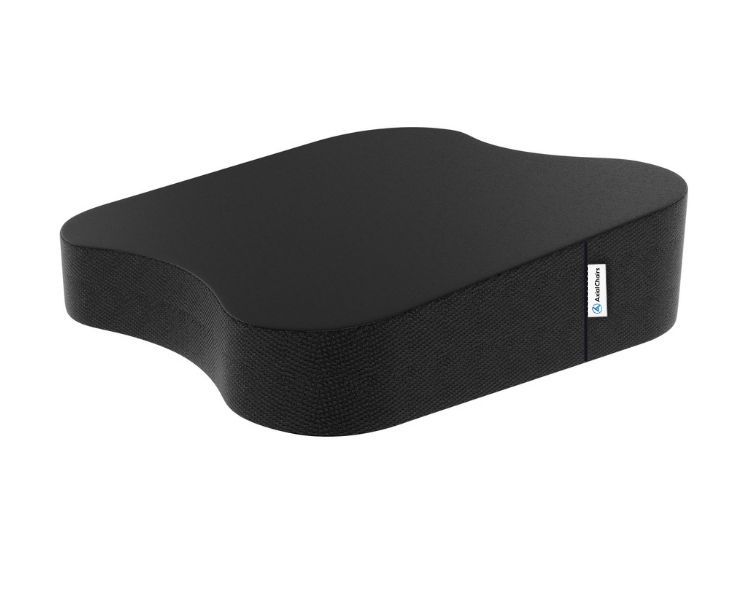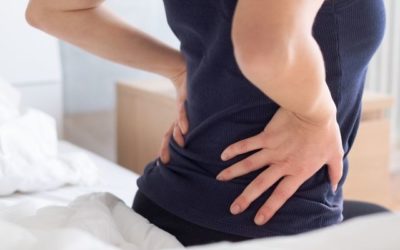Sciatica, a condition of pain and discomfort resulting from the compression or irritation of the sciatic nerve, is not only painful and inconvenient but can also be downright dangerous if it’s left untreated. It affects people differently depending on its severity and specific cause; however, one major issue that tends to weigh heavily on sufferers is how they use the bathroom with sciatica.
Questions such as: Can I still sit down? How well do I need to stretch before getting out of bed? Is it safe for me to use stairs? are all valid concerns that can lead you feeling overwhelmed when trying to cope with your condition. This post will provide helpful tips that outline important considerations while using the restroom with sciatica including exercises which may alleviate some symptoms. Furthermore, by explaining different methods available for managing bowel movements we hope this blog post provides better insight into understanding how best you should use the bathroom even when dealing with chronic lower back pain caused by sciatica.
As a general rule, to use the bathroom with sciatica: 1) Install grab bars 2) Use raised toilet seat or cushion 3) Bend knees, feet apart for stability 4) Lean forward, avoid twisting 5) Use gentle wiping, consider long-handled aid 6) Stand up slowly, using support. Adapt habits to reduce pain, prevent further injury.
Discover the top solutions for alleviating sciatica pain while going to the bathroom with my guidance. Over three decades of experience in chiropractic practice and ergonomics training have given me the expertise to address posture issues. I have authored a book on the topic, appeared on national television, and developed various innovations for improving seated posture and comfort. My recent Kickstarter campaign, which funded the creation of ergonomic seat cushions, further attests to my knowledge in this area. Allow me to share valuable advice that may minimize or even eradicate your sciatica pain.
The Challenges of Sciatica | Sciatic | Nerve Pain | Hip Pain
Sciatica is a painful condition that affects millions of people around the world. It occurs when the sciatic nerve, which runs from the lower back down through the buttocks and legs, becomes irritated or compressed. This can make even the most basic tasks, such as using the bathroom, a significant challenge. In this article, we will explore the best practices for managing bathroom use when suffering from sciatica, providing you with practical tips and solutions.
All Day Comfort & Support
Understanding Sciatica: Symptoms and Causes of Sciatica Pain
Before diving into the solutions, it is crucial to understand the symptoms and causes of sciatica. Common symptoms include:
- Lower back pain
- Pain in the buttocks and legs, often on one side
- Numbness, tingling, or weakness in the legs
- Difficulty moving the affected leg
- Sharp, shooting pain that makes standing or sitting difficult
Some common causes of sciatica are:
- Lumbar disc herniation
- Degenerative disc disease
- Spinal stenosis
- Spondylolisthesis
- Piriformis syndrome
Preparation and Prevention: Key Strategies for Bathroom Use
To minimize the pain and discomfort of using the bathroom with sciatica, consider implementing these preventative strategies:
- Maintain a regular bathroom schedule: Consistency is key, as waiting too long to use the bathroom can increase pain and discomfort. Establish a routine to help avoid sudden urgency and the need for rushed movements.
- Practice good posture: Proper posture can help alleviate pressure on the sciatic nerve. Sit up straight on the toilet, and avoid slouching or leaning too far forward.
- Install grab bars: Installing grab bars near the toilet can provide extra support when sitting down and standing up, reducing the strain on your lower back and legs.
Pain Relief Techniques for Bathroom Use
If you are experiencing sciatica pain while using the bathroom, try incorporating these pain-relief techniques:
- Warm-up before bathroom use: Light stretches or a short walk can help loosen tight muscles and reduce pain before using the bathroom.
- Apply heat or cold therapy: Applying a heating pad or ice pack to the affected area before and after bathroom use can help alleviate pain and discomfort.
- Use over-the-counter pain relievers: Non-prescription pain relievers, such as ibuprofen or naproxen, can help manage sciatica pain. Always consult your healthcare professional before starting any new medication.
Adapting Bathroom Fixtures and Toilet Accessories
Making some simple modifications to your bathroom can significantly improve comfort and accessibility when dealing with sciatica:
- Consider a raised toilet seat: A raised toilet seat can reduce the distance you need to lower yourself when sitting, making it easier to sit down and stand up without aggravating your sciatica.
- Use a toilet safety frame: A toilet safety frame can provide additional support and stability when sitting down and standing up from the toilet.
- Invest in a handheld shower head: A handheld shower head allows you to maintain control of water flow and direction, enabling you to shower while seated if standing for long periods causes pain.
Seeking Professional Help
If your sciatica symptoms persist or worsen, it’s essential to consult a healthcare professional. They may recommend additional treatments or therapies, such as:
- Physical therapy
- Chiropractic care
- Acupuncture
- Massage therapy
- Prescription medications
In some cases, surgery may be necessary to treat the underlying cause of sciatica. Always consult a healthcare professional before pursuing any treatment option.
How to Sit on Toilet with Sciatica: Find Relief and Protect Your Prostate
Sciatica can be a real pain when it comes to sitting on the toilet, but with a few simple adjustments, you can alleviate discomfort and protect your prostate health. If you experience unexplained pain or difficulty while sitting, it could be a warning sign of prostate problems like prostatitis or an enlarged prostate if they persist.
First, try using a raised toilet seat to help reduce pressure on your sciatic nerve. If you can, invest in a cushioned seat for added comfort. When sitting down, make sure to lean forward slightly and keep your knees higher than your hips. This position can help take the pressure off your sciatic nerve and reduce the risk of developing prostate issues like BPH or urinary tract infections.
How to Prevent Sciatica Pain When Sitting: Tips for Men’s Health
If you suffer from sciatica, you know that sitting can sometimes cause unbearable pain. To minimize discomfort, try sitting on a cushion or wedge to elevate your hips, which can help relieve pressure on the sciatic nerve. Make sure to maintain proper posture, with your feet flat on the floor and your knees at a 90-degree angle.
Incorporating regular exercise and stretches targeting the lower back and hips can also help prevent sciatica pain when sitting. Additionally, it’s important to be aware of the warning signs of prostate issues like prostatitis, BPH, and cancer prostate, as they can cause unexplained pain when sitting.
Immediate Relief for Sciatica Pain: What You Need to Know | Jama Network
For those seeking immediate relief from sciatica pain, try applying a cold or hot pack to the affected area. Alternating between hot and cold therapies can help reduce inflammation and alleviate pain. Over-the-counter pain medications like ibuprofen may also provide temporary relief.
How to Sit on Couch with Sciatica: Tips for Comfort and Prostate Health
Sitting on a couch with sciatica can be a challenge, but there are ways to make it more comfortable. Use cushions to support your lower back and elevate your feet with a footstool or ottoman. Additionally, it’s important to be aware of potential prostate issues, like enlargement or swelling, as they can cause discomfort when sitting.
Best Seat Cushion for Sciatica SupportAxial Ergonomic Seat Cushion® | Seat Chair Wedge
Quick Guide: A 30-Second Summary

All Day Comfort & Support
Product Name
Axial Designs™ Seat Cushion
Price
$149
Warranty
1 Year
Type
Posture Wedge
Top Layer
100% Natural Latex (Molded)
Bottom Layer
High-Density Foam
Top Material
Isometric Grippy Vegan Leather
Bottom Material
Non-Slip Material
Side Material
3D Breathable Fabric
How to Sit in Bed with Sciatica: Protecting Your Back and Prostate
If you’re struggling with sciatica pain, sitting in bed can be a challenge. Use pillows to prop yourself up and support your lower back, and consider using a wedge pillow to elevate your legs. This position can help alleviate pressure on the sciatic nerve while also reducing the risk of prostate issues like prostatitis, BPH, and urinary tract infections. Remember to listen to your body and consult a doctor if you experience persistent pain or any warning signs of developing prostate problems.
Summary
Having sciatica can be a serious issue and navigating it in the world of public bathrooms may cause extra challenges. It is important to know how to do this safely and properly as an individual with sciatica. Using public restrooms while having sciatica requires some extra considerations to ensure you are comfortable and safe.
First, pay attention to your own body sensations to see if sitting or standing is easier on your back. Second, look into portable supports like the toilevlift if you find it hard to reach down into the public toilet seat without some sort of aid. Lastly, bring along your own cushion in case there isn’t one provided for your comfort! Taking steps like these will ensure that you can use the bathroom safely with sciatica and allow you to continue living an active life on your own terms. The most important thing is to remember that there is no one-size-fits-all solution for every person’s unique situation so trust yourself and make sure you’re taking the time needed for finding what works best for you in order to stay healthy and happy!





